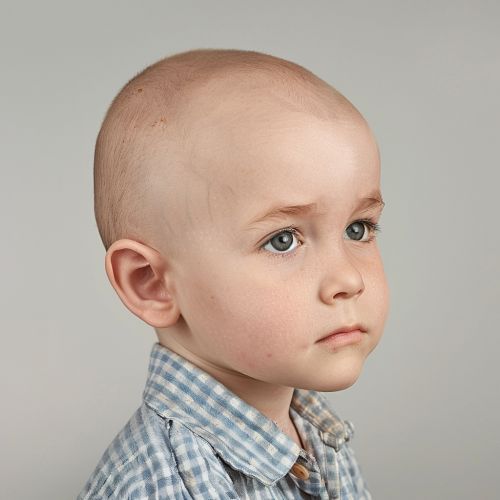Craniosynostosis
Introduction
Craniosynostosis is a congenital defect characterized by the premature fusion of one or more cranial sutures, the fibrous joints between the bones of the skull. This condition can lead to abnormal head shapes, increased intracranial pressure, and potential developmental delays. The severity and specific manifestations of craniosynostosis depend on which sutures are affected and the timing of their fusion.
Epidemiology
Craniosynostosis occurs in approximately 1 in 2,000 to 2,500 live births. It can present as an isolated condition or as part of a syndrome. Non-syndromic craniosynostosis accounts for the majority of cases, while syndromic craniosynostosis is associated with genetic syndromes such as Apert, Crouzon, and Pfeiffer syndromes.
Etiology
The etiology of craniosynostosis is multifactorial, involving genetic and environmental factors. Mutations in genes such as FGFR1, FGFR2, FGFR3, and TWIST1 are commonly implicated in syndromic cases. Environmental factors, including maternal smoking, advanced paternal age, and certain medications, have also been associated with an increased risk of craniosynostosis.
Pathophysiology
The premature fusion of cranial sutures disrupts the normal growth pattern of the skull. Normally, the sutures remain flexible to accommodate brain growth during infancy and early childhood. When these sutures fuse prematurely, compensatory growth occurs at the remaining open sutures, leading to characteristic skull deformities. For example, fusion of the sagittal suture results in a long, narrow skull known as scaphocephaly, while fusion of the coronal suture leads to a short, wide skull known as brachycephaly.
Clinical Presentation
The clinical presentation of craniosynostosis varies depending on the affected sutures. Common signs include:
- Abnormal head shape
- Palpable ridges along fused sutures
- Asymmetry of the face and skull
- Increased intracranial pressure
- Developmental delays
Diagnosis
Diagnosis of craniosynostosis typically involves a combination of clinical examination and imaging studies. Physical examination may reveal characteristic skull deformities and palpable suture ridges. Imaging modalities such as CT scans and MRI are used to confirm the diagnosis and assess the extent of suture fusion.
Treatment
The primary treatment for craniosynostosis is surgical intervention. The goals of surgery are to correct skull deformities, relieve intracranial pressure, and allow for normal brain growth. Surgical techniques include:
- **Cranial Vault Remodeling**: Reshaping the skull by removing and repositioning bone segments.
- **Endoscopic Surgery**: Minimally invasive technique involving small incisions and the use of an endoscope to release fused sutures.
Prognosis
The prognosis for individuals with craniosynostosis varies depending on the severity of the condition and the timing of intervention. Early diagnosis and surgical treatment generally result in favorable outcomes, with improved skull shape and reduced risk of intracranial pressure complications. However, some individuals may experience persistent developmental delays and require ongoing medical and therapeutic support.
See Also
Image


